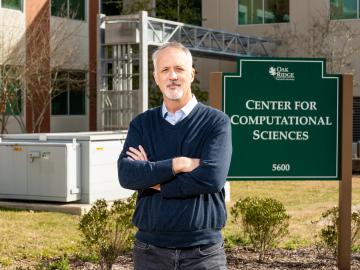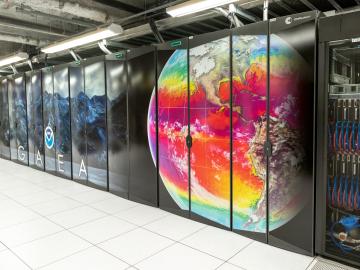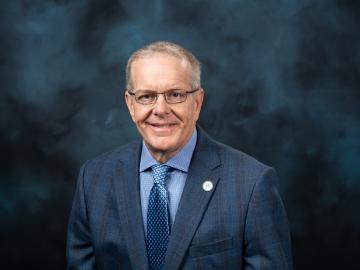
Filter News
Area of Research
- (-) National Security (13)
- (-) Supercomputing (73)
- Advanced Manufacturing (22)
- Biological Systems (1)
- Biology and Environment (115)
- Biology and Soft Matter (1)
- Building Technologies (1)
- Computational Biology (2)
- Computational Engineering (2)
- Computer Science (3)
- Electricity and Smart Grid (1)
- Energy Science (146)
- Functional Materials for Energy (1)
- Fusion and Fission (7)
- Fusion Energy (1)
- Isotopes (7)
- Materials (58)
- Materials for Computing (4)
- Mathematics (1)
- Neutron Science (27)
- Nuclear Science and Technology (7)
News Topics
- (-) 3-D Printing/Advanced Manufacturing (7)
- (-) Biomedical (17)
- (-) Critical Materials (3)
- (-) Environment (26)
- (-) High-Performance Computing (45)
- Advanced Reactors (2)
- Artificial Intelligence (46)
- Big Data (25)
- Bioenergy (11)
- Biology (14)
- Biotechnology (3)
- Buildings (4)
- Chemical Sciences (5)
- Computer Science (105)
- Coronavirus (16)
- Cybersecurity (23)
- Energy Storage (9)
- Exascale Computing (26)
- Frontier (32)
- Fusion (2)
- Grid (11)
- Isotopes (2)
- Machine Learning (24)
- Materials (16)
- Materials Science (17)
- Mathematics (2)
- Microscopy (7)
- Molten Salt (1)
- Nanotechnology (11)
- National Security (36)
- Neutron Science (15)
- Nuclear Energy (8)
- Partnerships (5)
- Physics (9)
- Polymers (2)
- Quantum Computing (20)
- Quantum Science (26)
- Security (15)
- Simulation (16)
- Software (1)
- Space Exploration (3)
- Summit (43)
- Transportation (8)
Media Contacts

To support the development of a revolutionary new open fan engine architecture for the future of flight, GE Aerospace has run simulations using the world’s fastest supercomputer capable of crunching data in excess of exascale speed, or more than a quintillion calculations per second.

ORNL’s Debangshu Mukherjee has been named an npj Computational Materials “Reviewer of the Year.”

A study led by researchers at ORNL could uncover new ways to produce more powerful, longer-lasting batteries and memory devices.

The Oak Ridge Leadership Computing Facility’s Matt Sieger has been named the project director for the OLCF-6 effort. This next OLCF undertaking will plan and build a world-class successor to the OLCF’s still-new exascale system, Frontier.

Computing pioneer Jack Dongarra has been elected to the National Academy of Sciences in recognition of his distinguished and continuing achievements in original research.

Using disinformation to create political instability and battlefield confusion dates back millennia. However, today’s disinformation actors use social media to amplify disinformation that users knowingly or, more often, unknowingly perpetuate. Such disinformation spreads quickly, threatening public health and safety. Indeed, the COVID-19 pandemic and recent global elections have given the world a front-row seat to this form of modern warfare.

Oak Ridge National Laboratory, in partnership with the National Oceanic and Atmospheric Administration, is launching a new supercomputer dedicated to climate science research. The new system is the fifth supercomputer to be installed and run by the National Climate-Computing Research Center at ORNL.
Xiao Wang, a research scientist at ORNL, has been named a senior member of the Institute of Electrical and Electronics Engineers, the world’s largest organization for technical professionals. Wang works in the lab’s Computing and Computational Sciences Directorate’s Advanced Computing for Health Sciences Section.

Craig Blue, Defense Manufacturing Program Director at the Department of Energy’s Oak Ridge National Laboratory, was recently elected to a two-year term on the Institute for Advanced Composites Manufacturing Innovation Consortium Council, a body of professionals from academia, state governments, and national laboratories that provides strategic direction and oversight to IACMI.
The Autonomous Systems group at ORNL is in high demand as it incorporates remote sensing into projects needing a bird’s-eye perspective.


